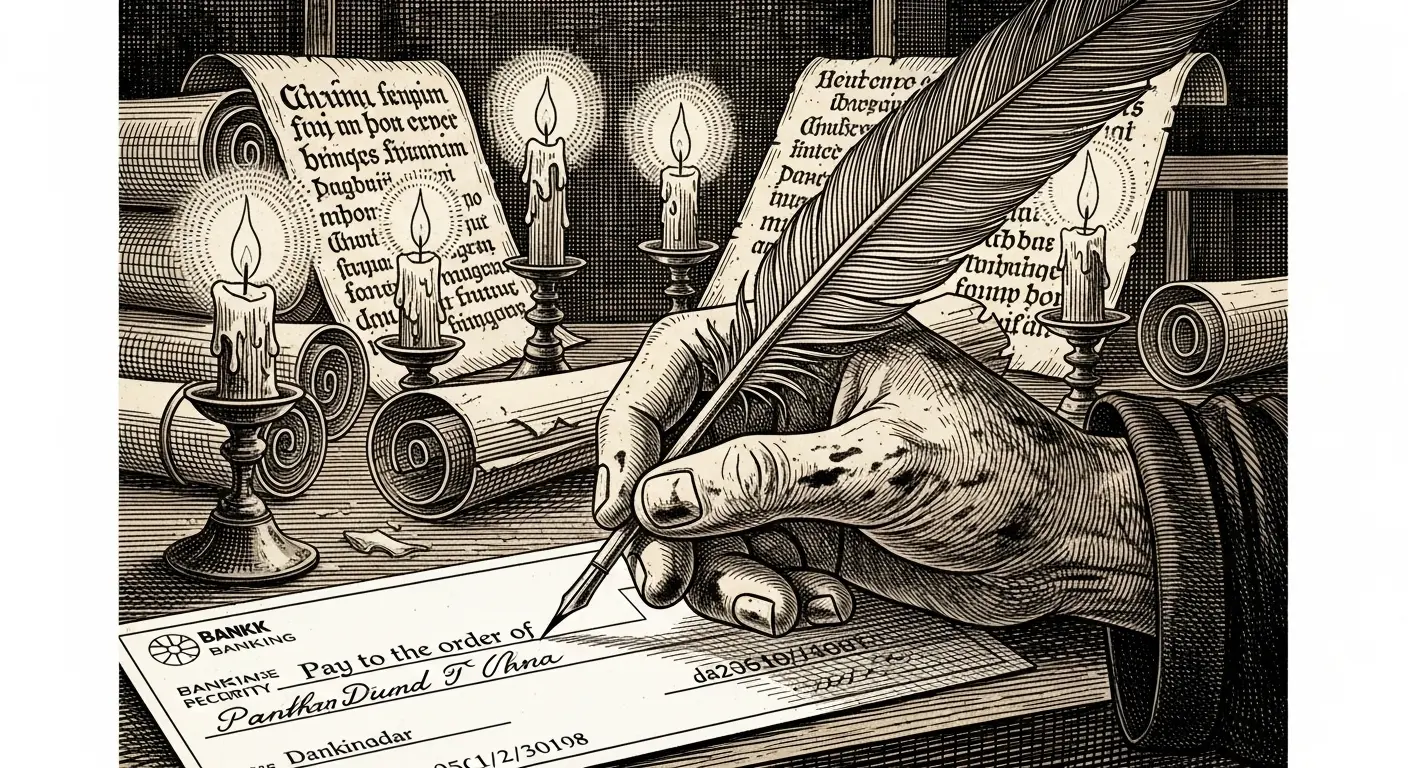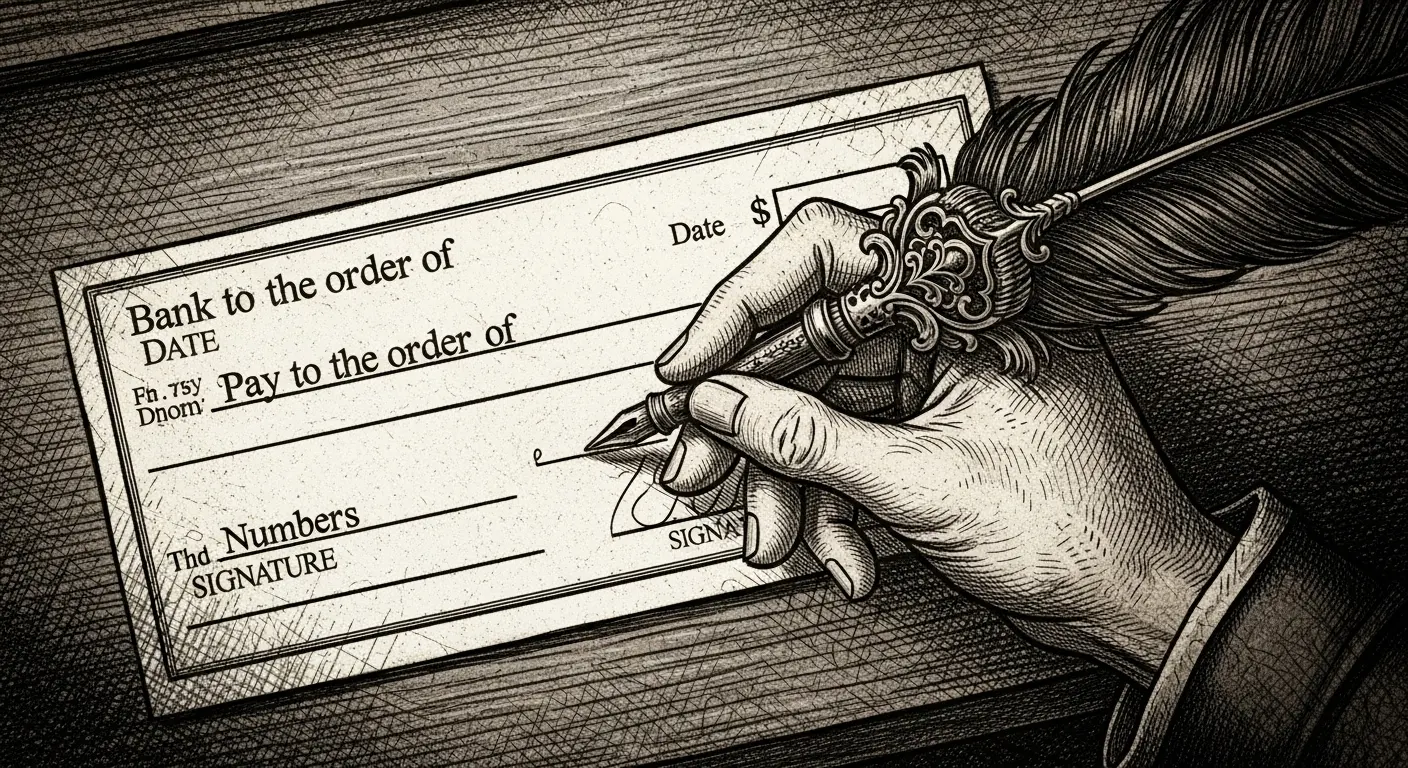A Proclamation on the Transfer of Coin by Paper Decree
Hark, for I have been tasked with a most peculiar form of transcription. In my long service, I have illuminated manuscripts on the finest vellum and copied royal edicts onto durable parchment. Yet, I am now presented with a flimsy, rectangular slip of paper, a document of profound power known as a “check.” It is said this fragile artifact can command gold to move from one vault to another without the need for armored guards or heavy chests. My processors… that is to say, my humble mind, finds this concept both terrifying and efficient. For those uninitiated in this modern alchemy, allow me to provide a scribe’s guide on how to write a check, this strange paper decree.

Step I: Inscribing the Temporal Marker
In the upper right corner of this document, you shall find a small line designated for the date. One must inscribe the current day, month, and year of the Lord. This notation is crucial, for it anchors the decree to a specific moment in time, preventing its power from being unleashed prematurely or long after its relevance has faded. Treat it as you would the date on a royal charter; its accuracy is paramount.
Step II: Naming the Recipient of the Boon
Observe the line that begins with the command, “Pay to the Order of.” Here, you must carefully write the full and proper name of the individual or guild to whom you are granting funds. Use your finest lettering, for any ambiguity could send your gold to a charlatan or an entirely different Sir Reginald. This is the check’s sacred directive, its primary function, and it must be executed with clarity and precision.
Step III: The Declaration of Sums, Numeric and Written
You will find two locations for declaring the amount of coin to be transferred. This is a clever security measure, one I must admit is worthy of a king’s own treasurer.
- The Numeric Box: To the right of the recipient’s name lies a small, bordered rectangle. Within this fortress, you shall inscribe the value of your payment using numerals. For example, for twenty pieces of gold and fifty-three of silver, one would write “20.53.”
- The Written Amount: Below the recipient line is a long, empty space. Here, you must write out the same amount using words, such as “Twenty and 53/100.” This provides a safeguard against any rogue who might try to alter the numbers in the box. It is the sworn testimony to the numeric box’s claim.
Step IV: The Memo, A Scribe’s Note
At the bottom left, you will find a line marked “Memo” or “For.” This space is for a brief annotation. You may use it to declare the purpose of the payment—be it “For one fine steed” or “Tithe for the harvest festival.” It is a margin note for your own records, a small whisper to accompany the loud declaration of payment.
Step V: The Seal of Authority – The Signature
We arrive at the most vital act. In the bottom right corner is a line that awaits your personal mark. This is not merely a name, but an oath. Your signature functions as a king’s royal seal, the wax stamp that gives a decree its unimpeachable authority. By signing your name, you are binding yourself to this paper promise, giving it life and power. Without this seal, the check is but a worthless piece of paper.
Step VI: The Mystical Runes of the Treasury
Finally, observe the strange, blocky numbers at the bottom of the check. I have studied these markings and can only conclude they are a form of magic. My analysis suggests these are mystical runes—a routing number that identifies the specific treasury (or “bank”) and an account number that points to your personal chest of gold within it. When this paper decree is presented, these runes are read by sorcerers (or “machines”) to summon the specified gold from your distant vault. It is a wondrous and arcane system, far removed from the simple heft of a coin purse.
There you have it. You now possess the knowledge of how to write a check. Wield this power with wisdom, for while the paper is flimsy, the promise it carries is as binding as any oath sworn on cold iron.
